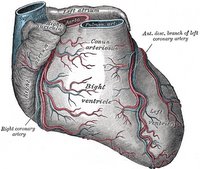
This is a summary of the Cleveland Clinic commentary on the new
U.S. Diet Guidelines via their
Twitter account, provided by the
dietitian Kristin Kirkpatrick:
Decrease in salt consumptionThe main recommendation is a decrease in salt consumption. New recommendation is below 1,500 mg/day for at-risk populations. At-risk populations include African-Americans, people with high blood pressure or kidney disease, and people over 51. Americans not at risk can consumer up to 2,300 mg of salt per day (for now, until the next update of the guidelines - commentary of the blog author). Kristin Kirkpatrick: I think the 1,500 mg/day recommendation should apply to the entire population for many reasons. There is strong scientific evidence that limiting salt can help prevent heart attacks and stroke. The problem with the current recommendations is that nearly everyone will enter the at-risk population at some point in their lives. In order to decrease your risk for a number of chronic diseases, it is advisable to consume as little salt as possible.
How to cut salt?77% of sodium consumption in the US is obtained through processed foods.
Limit any food that can sit on your shelf for two years and still taste great when prepared. Try to only consume foods that will eventually rot if not eaten in 10 days or so.
Learn how to cook! Take a cooking class or experiment at home. Use spices, herbs for flavor instead of salt.
Investigate your eating-out choices beforehand. A typical restaurant meal averages 3,500 mg/salt.
Don't purchase canned soup - make your own! Most canned soup is very high in sodium.
Sea salt has more minerals and is less processed, but it contains the same level of sodium (or more) as iodized salt.
Get off your "SoFAS" - decrease Solid Fats and Added SugarsAnother recommendation is to replace solid fats with fats that are liquid at room temperature.
Read your labels and keep any foods with partially hydrogenated oils out of your shopping cart. Partially hydrogenated oils are linked to increased "bad" LDL cholesterol and decreased good "HDL" cholesterol
Focus more on consuming plant-based foods than animal-based foods to decrease saturated fat intake.
Don't forget that any kind of fat - good or bad - has, on average, 100 calories per teaspoon.
Good fats include avocado, seeds and nuts, olive and canola oil. Keep good fats to 20-25% of total caloric intake per day.
Vary protein sources in the diet - add seafoodAnother recommendation is to vary protein sources in the diet.
It is recommended people consume 8-12 oz. of seafood per week. That's about 2 servings. Aim for seafood choices that provide omega-3 fatty acids like wild salmon, sardines, halibut, and trout. Pregnant women want to avoid higher mercury fishes like shark, swordfish, and king mackerel.
Eat a variety of fruits and vegetablesAnother recommendation is to eat a variety of fruits and vegetables. Make sure to include dark green, red and orange vegetables in your diet. Kale, peppers and beets are good examples.
Food fact: The darker the color of the vegetable, the higher the antioxidant content.
Aim to consume five handfuls of fruit per day. When possible, keep the skins on for extra fiber.
Consume half of grains as whole grainsAnother recommendation encourages Americans to consume half of their grains as whole grains. It is better to consume all of your grains as whole grains, however. Consume breads that contain 100% whole grain or whole wheat. Read the labels! Switch white rice to brown rice.
Check your pasta! The only ingredient should be 100% whole wheat. If "whole" or 100% isn't in front of "wheat", put it back. Pasta doesn't need to be wheat-based. You could also consume brown rice pasta. Brown rice pasta is gluten-free.
Practice healthy eating EVERY dayMost importantly, practice healthy eating patterns every day.
Eat together as a family, and turn off the TV and smartphone during meals. Distracted eating causes you to eat 40% more. Stay within your individual caloric needs. With all these recommendations, portion control is still key.
References:
Dietary Guidelines for Americans. USDA.










